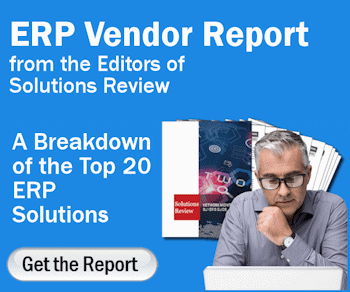Taking a Closer Look at the Reporting Function in ERP


Whether a company is using one of the “Big 6” ERP’s – SAP, Oracle, Sage, Workday, Infor, or Microsoft Dynamics – or one of the hundred or more other smaller ERP’s that are customized to a specific vertical industry, ERP software systems are the “heart and lungs” of any business. From inventory, sales, and purchasing to manufacturing and finance, ERP systems touch every part of the business and provide workflow and control. When you hear enterprises talking about “mission-critical” systems, they are talking about their ERP. In fact, most companies invest millions in these systems, dedicating huge teams and amounts of time to manage, customize, and optimize them, all to gain a strategic edge.
The challenge for companies is that this treasure trove of data resides in a monolithic system that retains and structures data in very rigid and complex ways that are not aligned with the agile reporting needs in today’s market. Everything is data-driven now, but if teams can’t easily access and report on it in an automated fashion and in real time, the data isn’t very valuable.
Widget not in any sidebars
In this light, we spoke with Mike Lipps, CEO, insightsoftware, about some of the common challenges a lot of teams have in terms of reporting out of ERP systems – and how this type of automation not only benefits the business, but also adds value to the underlying ERP data and investment.
What are some of the common challenges?
The ERP system has a tremendous amount of data, but it is not easily accessible. There are also other systems with critical data, but they cannot easily be combined, creating disparate islands of data and knowledge scattered around the business.
ERP systems were supposed to help with this, but they haven’t. And this view is reinforced by survey data from an industry consulting service about executive views after deploying ERP systems: 44% of teams realize less than half the expected benefits of their ERP system, 50% plus realized no productivity or efficiency gains after implementation, and most alarmingly, given the required investment, only 17% believe their ERP has led to better-informed decision making.
The reason is clear: a disconnect between the data and timely reporting. As an example, a typical finance department is closing the books at the end of each month as well as doing a quarterly and annual reports. Today, most finance departments are pulling the required data out of the ERP and other systems, putting it into Excel or another reporting tool, manipulating the data and formatting it into the required reports…and then repeating that exact same manual process for every single report.
The challenges are pretty straightforward: It’s a manual, time-consuming, and error-prone process that typically requires business users to rely on IT staff to accomplish it. More importantly, it starves the business of having the real-time data and analysis to make strategic decisions.
And if you think finance departments are fully automated, think again. In survey from 2013, 60% of U.S. and European companies said they were still doing manual reconciliations. According to Robert Half, the number of U.S. companies reporting they were still manually reconciling financial reports in 2019 hasn’t changed much, weighing in at 54%.
What about ROI?
In the world of financial reporting, time is money. I don’t just mean reducing the wasted staff time of manually creating reports, although that is important. It’s also about getting the right data faster to make more informed decisions about the business.
In an accounting benchmarking survey from last year, the median time it was taking businesses to close the books each month was about six and half business days, with some taking two weeks. Think about that, a company could already be two weeks into its next month before the reports on the previous month are ready!
The Hackett Group researched the ROI on reporting and found companies using more streamlined and automated reporting required 49% fewer reports and spent 39% less on business performance reporting labor. We work with more than 20,000 customers worldwide and have found that with more automated reporting they routinely save 20-40% on their closing time and 84% report saving 50-100 hours annually.
How can you overcome these common ERP reporting issues?
A new approach for many companies is to use intelligent reporting software as a front-end to leading ERP systems that can extract the critical data in a standardized format that can be locked down and re-run every month, quarter, or other regular cycle. This eliminates the time previously needed to manually collect the necessary data, extract it, manipulate it, reconcile it and then put into customized reports. This also empowers business users and finance teams to do reporting on their own without requiring IT or other technical intervention, which can add days or weeks to the process.
Most importantly, automated and more accurate reporting helps turn operational data into a company’s “story” and changes the role of the finance team from historical bookkeepers into the more value-added role of true strategists and catalysts for the business in terms of analytical decision-making to drive growth and improve ROI.
Looking for more? Download our ERP Buyers Guide for free to compare the top-24 products available on the market with full page vendor profiles, key capabilities, an ERP software market overview, our bottom line analysis, and questions for prospective buyers.
And don’t forget to follow us on Twitter, Facebook and LinkedIn for all the latest in the ERP space!























